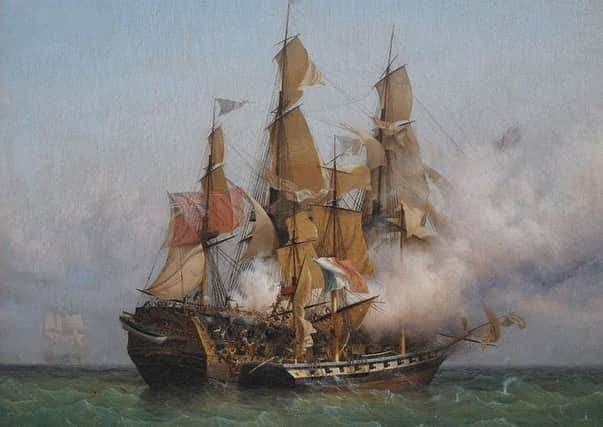The legal Scots pirates who robbed the high seas


For hundreds of years, privateers could be found riding the the high seas of the world looking for enemy ships – and cargo to steal, with the full backing of their home government who often received a cut of the profits.
Scotland has a long tradition of privateering and its illegal brother piracy, with the relationship between the two often blurred.
Advertisement
Hide AdIllegal operators were sometimes hanged – but a blind eye was often turned to the actions of a well-connected few.
The former Provost of Aberdeen, Robert Davidson, also a wine merchant and tavern keeper, was amongst those who had legal Privateer status during the 15th Century, having received his Letter of Marque from the government which authorised him to attack.
However, he also faced prosecution by the Dutch government that he had been involved in illegal acts.
Davidson was also the legal adviser to the Earl of Mar, who headed up a commission into compensation payments for victims of piracy.
Davidson was to get out of the court case using his connections but he was also involved in the capture of a boat belonging to Lord Mayor of London, Dick Whittington.
In the book Bloody Scottish History of Aberdeen, author Elma McMenemy said the Provost was “certainly involved” in the seizure of the Mayor’s boat Thomas, whose cargo was sold in Amsterdam.
Advertisement
Hide AdPiracy had become such a problem that the Dutch and Hanseatic League imposed a trade embargo with Scotland, including wool from Aberdeen, Ms McMenemy said.
The court case raised against Davidson by the Dutch was thwarted after he managed to get the French government to effectively stop the action.
Advertisement
Hide AdDavidson also got the Burgh of Aberdeen to write a letter to Danzig – which blamed the Dutch for the exploits.
Davidson was in the clear – but he wasn’t the only one doing well out the system.
Jason Finch, curator of archaeology and maritime history at the Aberdeen Maritime Musuem, said that Sir Andrew Barton, the lord High Admiral of Scotland, was also involved in privateering
Mr Finch said: “Some of the privateers had been former pirates. Quite often privateers would be quite run of the mill people but also very important people got involved.
“In the case of Sir Andrew, you have the most senior Naval Commander going off to be a privateer, having received his letters of marque from James III in 1485.”
Mr Finch, has identified three ships from Aberdeen that went missing during the Naploeonic Wars.
Advertisement
Hide AdThe Minerva, built in 1809, was captured during 1810 with the vessel Friends captured in 1815.
Earlier, Perseverance Packet, bulit in 1798 and registered to the north east harbour, vanished in 1798, but was then recaptured and pulled back to British waters.
Advertisement
Hide AdRecords showed that each ship was taken by French privateers, Mr Finch said.
Mr Finch said privateering was backed by the Government in order to raise a cheaper version of a Navy – and that private ship owners could do very well out of the system.
Those held captive by privateers were given the same status as prisoners of war.
“It was a very cheap way of boosting naval strength and in the 17th Century was very popular as the naval power of England and Scotland was very weak.
“By the 19th Century the Royal Navy was the most powerful navy in the World.”
“Really, privateering was a way to strike back at the enemy so there was a sense of patriotism there, but it was also a good way to make money. Some people did very well out of it.”
Privateering was eventually outlawed in 1856 by the Treaty of Paris.